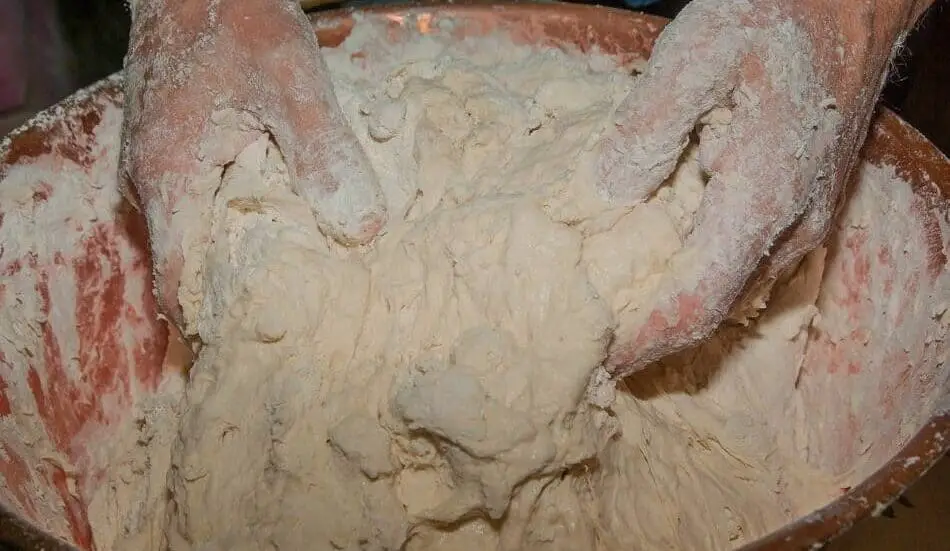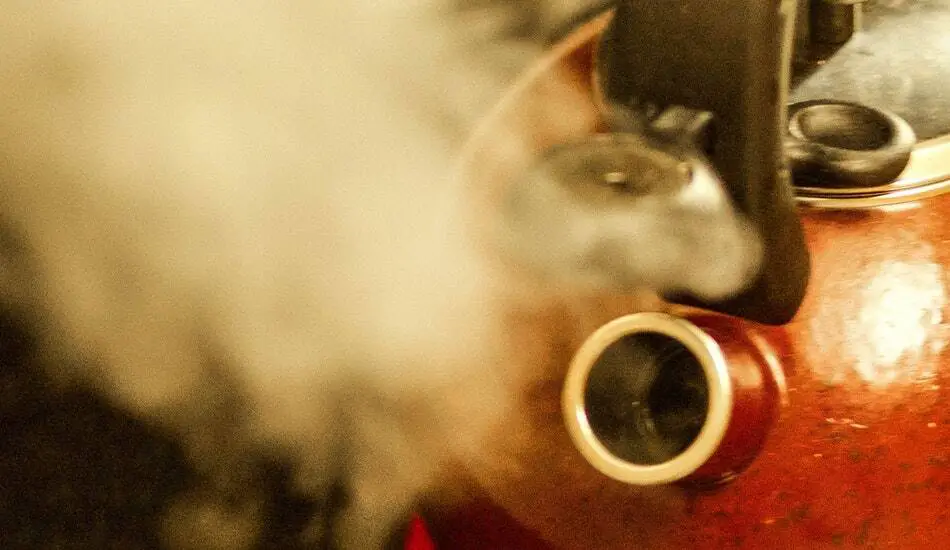I feel in love with sourdough bread when I first tasted a well baked sourdough bread that has this deep, rich and flavorful wheaty aroma that lingers and left me craving for more and more; I ended up eating the whole loaf plainly on its own!
However, that flavorful loaf can be quite elusive; achieving a full flavored loaf is a milestone in any baker’s journey. This article will teach you how to retain and bring out the best flavor that your flour and sourdough has to offer.
1. Preserving carotenoid pigments (Flavor) through minimizing mixing
Mixing is an important step as the gluten network is developed which gives the dough its structure and enables it to trap carbon dioxide gasses that causes the loaf to rise.
However, over mixing causes the loaf to lose its full flavor as the carotenoid pigments in the flour gets oxidized when the dough is mixed and oxygen incorporated into it. The carotenoid pigments is responsible for the wheaty aroma of a flavorful bread.
In order to preserve the flavorful carotenoid pigments, we want to mix the dough as little as possible by only developing the gluten just enough to achieve adequate dough strength so that they dough is able to keep its shape during shaping and hold carbon dioxide gasses. Aim to mix the dough to slightly less than the desired dough strength as the acidity and folding action from the bulk fermentation phase helps to increase the dough strength considerably.
As a general rule of thumb, the total mixing time for sourdough bread shouldn’t be more than 7 minutes when using a spiral mixer.
The table below gives us a rough guide on the appropriate mixing times of different mixers to achieve moderate dough strength, reducing the risk of under-mixing and over-mixing.
| Mixer | First Mixing (Minutes) | Second Mixing (Minutes) |
| Spiral | 3 | 3 |
| Planetary | 3 | 7 |
| Oblique | 5 | 9 |
| Stand Mixer (KitchenAid Type All Purpose Mixer) | 2.5 | 4.5 |
| Hand Mixing | 2 | 7 |

2. Preserve carotenoid pigments (Flavor) using autolyse
Autolyse helps preserve the full flavor in the flour by minimizing the oxidation of the flavorful carotenoid pigments as dough that has gone through autolyse requires a shorter mixing time.
Autolyse involves the mixing of only flour and water (without salt, yeast or any pre-ferments) that is covered and left to rest for 20 minutes to 1 hour. During the rest period the dough fully hydrates, and gluten is developed in spite of the lack of mechanical mixing.
When using autolyse, we are able to achieve the same desired level of gluten development in the dough with less mixing time, and hence the carotenoid pigments and flavor of the flour is preserved.
3. Using pre-ferments
Pre-ferment is essentially a sourdough starter that has been built up overnight to the desired weight before incorporating it into the final mix for baking.
A pre-ferment has many hours to mature fully in terms of its flavor and acidity. The lactic acid and acetic acid in the pre-ferments contributes flavor and strengthening of the dough structure.
Lactic acid gives the loaf a smooth sourness (akin to yogurt) while acetic acid provides a sour bite (akin to vinegar).
With the use of the acidic pre-ferment, less mixing time is required as dough structure is enhanced from the acidity; oxidation of carotenoid pigment is minimized and flavor is preserved.
4. Retarding the dough
Retarding (in a retarder-proofer which controls temperature and humidity) is a process of resting the dough in a cold environment which allows the dough to fully ferment across a longer time, producing better flavor; dough that ferment at a slower rate across a longer time results in better flavor than dough that ferments at a quicker rate over a shorter time.
The temperature at which the bread remains in the retarder is determined by the length of time of the retard process. The longer the retard time, the lower the temperature. For bread that retard up to 8 hours, 10 Celsius should suffice; for up to 16 hours, 5 Celsius should suffice. However when bread is retarded past 24 hours, it will be overly acidic no matter the temperature at which it is left in the retarder-proofer.

5. Appropriate fermentation temperature
Fermentation temperature plays an important role in flavor development. Although the optimum fermentation temperature for the highest fermentation rate (most carbon dioxide production) is at about 30 Celsius, the optimum fermentation temperature for the best flavor is slightly below that at about 25C. As temperature deviates from 25 Celsius flavor is reduced.
It is important that we use water at the right temperature to achieve the desired dough temperature as it enters the bulk fermentation phase by taking into account the room temperature, the flour temperature, the pre-ferment temperature, and the friction factor of the mixer.
The use of an accurate digital thermometer is crucial as a slight variation in temperature can significantly affect the flavor of the baked loaf.
6. Using diastatic malt
Amylase enzymes produces simple sugars which is consumed by the yeast and bacteria during the fermentation process. When amylase levels are too low, there isn’t enough simple sugars for fermentation, fermentation is impaired and hence the development of flavor is impaired.
Some times farmers harvest grains when their amylase levels are low, and hence the addition of diastatic malt (at 0.1-0.2%) is required to compensate for the low levels of amylase.
If malted barley is listed as an ingredient in the flour, the flour has been corrected prior to packing and no further malt is needed. We can also look for the falling number which indicates how much amylase is in the flour; add malt when falling number is more than 300.

7. Ensure adequate steaming
The crust of the sourdough bread imparts significant flavor to the baked loaf. The crust is formed when the surface of the loaf takes on a dark coloration as it goes through the Maillard reaction that occurs in the presence of heat, acids and reducing sugars. All of which coexist when properly made bread is loaded into the oven and steamed.
The steam moistens and reduces the temperature at the surface of the dough in the oven, which prolongs the time amylase enzymes remain active. The longer the amylase enzymes are active, the more simple sugar is produced on the surface of the loaf. The simple sugar darkens when it is exposed to heat and moisture and imparts significant flavor to the baked loaf.
Sourdough bread that has not been steamed may turn out relatively pale in coloration and compromised in terms of flavor.
Once the crust has taken on adequate coloration, finish the bake in a dry environment by venting the oven of any remaining steam to ensure that the crust remains thin and crisp.
8. Folding and Degassing once every 1 hour of bulk fermentation
The action of folding and degassing is usually done at the same time. The folding action helps to further strengthen the dough, while the degassing action removes any excessive build up of carbon dioxide gasses that can impair the fermentation process.
When there is excessive build up of carbon dioxide, fermentation is disrupted and flavor production suffers as well.
It is advisable to degas at least once every 1 hour of bulk fermentation to ensure that the fermentation process is not impaired and full flavor can be developed.
9. Avoid excessively dry dough
With excessively dry doughs (less than 60% hydration), the flour is not properly hydrated. A few more percentages of hydration can transform a dough that has limited flavor development to one that expands to its fullest flavor potential.
10. Feed sourdough starter at least twice prior to baking
Young developing sourdough starters only contains homofermentative bacteria that produces lactic acid while older cultures have heterofermentative bacteria which produces both lactic and acetic acid.
Lactic acid gives off a mild sourness akin to yogurt while acetic acid gives off a sour bite akin to vinegar. Acetic acid has a much more complex flavor profile than lactic acid, hence we want to be using older cultures that contain a good balance between homofermentative and heterofermentative bacteria.
By building the sourdough starter with at least two feedings prior to baking, we can ensure that the heterofermentative bacteria has sufficient time to thrive and produce enough acetic acid that gives the loaf its complex flavor profile.
11. Use whole rye flour in your starter
Whole rye flour in particular is commonly used in the initial stages of building a sourdough starter as it contains a wide variety of wild yeast and bacteria that takes part in the fermentation process.
The wide variety of microorganisms in sourdough starters made with whole rye flour produces a loaf with a more complex aroma and flavor as compared to sourdough starters made with only wheat flour.

12. Remember to add salt
Sometimes we forget to add salt into the mix as different formula calls for the addition of salt at different times during the baking process. The absence of salt causes a myriad of problems which includes a bland tasting sourdough bread. Always taste the mix when the ingredients are added to check if salt has indeed been added.
Salt provides flavor to the bread; without salt, bread tastes flat and insipid. However, salt is not a substitute for the refined flavor of a well fermented dough.
Salt not only provides flavor but it also preserves the flavor of the flour as it delays the oxidation of the carotenoid pigments during mixing. The carotenoid pigments is responsible for the wheaty aroma that we get in bread and they are prone to oxidation during mixing which renders them tasteless and odorless.
It does not matter what salt you use, it is quite hard to notice a difference in flavor.
Always weigh your salt rather than measuring its volume as salt grains come in different sizes (i.e. sea salt, fine salt, granular salt) and subsequently different densities.
13. Using flour of higher extraction rate and ash content
The higher the extraction rate of the flour, the greater the flavor and wheaty aroma of the bake. Flour that is milled closer to its periphery contains a higher proportion of protein and minerals and corresponds to a higher extraction rate and ash content.
Whole grain flour uses all parts of the kernel and has an extraction rate of 100%. Whole grain flour has the best flavor because it contains all parts of the kernel which contains the full contents of protein, minerals and fats of the grain.
14. Using red wheat flour
There are two distinct types of wheat; white and red. White wheat contains a recessive gene for bran color resulting in a lighter appearance, hence the name white. White wheat flavor is milder than red wheat, as red wheat contains strong flavored phenolic compounds.
Breads baked with white wheat are lighter in color and are more subdued in taste than those made with red wheat. Use red wheat flour for a richer tasting loaf.
15. Avoid bleached flour
Bleached flour (using benzoyl peroxide or chlorine gas) artificially ages the flour but it looses some of its carotenoid pigments and along with it, aroma, flavor and crumb color is compromised. Always use unbleached flour that is aged naturally as it is superior in bread flavor.
Bleach flour also kills off important microorganisms that is needed for sourdough bread to ferment. Using bleached flour in sourdough leads to a much inferior fermentation as compared to unbleached flour, and results in a compromised flavor.
Using unbleached flour is particularly important for naturally leavened (no commercial yeast added) sourdough bread as all of its leavening ability comes from the naturally present microorganisms in the flour.
16. Avoid using dough conditioners
The bulk fermentation phase is when the majority of the dough’s flavor is developed. The best flavors are developed over a slow and lengthy bulk fermentation phase.
Artificially speeding up the bulk fermentation phase through use of dough conditioners, powdered sourdough, or no time dough mixes have negative effect on flavor.


